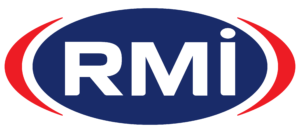
 Amidst growing pressure, the South African Insurance Association (SAIA) , Monday, launched, a new VIN-Lookup website with Code 3 (rebuilt), Code 3A (spare parts only) and code 4 (scrap- permanently demolished vehicles) to allow motorists and all relevant stakeholders access to the motoring history of a particular vehicle.
Amidst growing pressure, the South African Insurance Association (SAIA) , Monday, launched, a new VIN-Lookup website with Code 3 (rebuilt), Code 3A (spare parts only) and code 4 (scrap- permanently demolished vehicles) to allow motorists and all relevant stakeholders access to the motoring history of a particular vehicle.
Jacques Viljoen, National Director of the South African Motor Body Repairers Association (SAMBRA), a constituent association of the Retail Motor Industry Organisation (RMI), says while the industry welcomes this first release, it is however not getting to the heart of the problem which talks to previously written off code 2 vehicles that find their way to salvage yards and are then repaired and sold back into the system to unsuspecting consumers.
“The real issue we are fighting is transparency and access to information. The code 3’s and 4’s are already on our system but it is the code 2’s which have been declared uneconomical to repair which talk to the problem,” Viljoen insists.
Viljoen said he was surprised the first SAMBRA heard of the new website was from media reports.
“We have received no direct communication from SAIA since July this year. We would definitely like to engage with SAIA to understand who is driving the website and uploading the data and will be corresponding with them directly,” he maintains.
Participants across the value chain including banks, retailers and motor body repairers are all anxious to help speed up implementation of the Code 2 written off cars.
“It’s simple,” says Viljoen, “Without a transparent record there is no way to inform prospective buyers of used motor vehicles, whether they are private individuals or user car dealers, of the status history of the vehicle and this is a major problem for unsuspecting motorists who are buying second hand vehicles.”
William Miller, CEO of DealersOnline, vehicle valuation and auction specialists for the South African dealer market, confirms that they receive at least one complaint every week of an incorrectly coded vehicle. He says just last week, they sent a 2021 KIA Seltos with just over 38 000 km on the clock for an independent assessment. The vehicle had been bought new from a dealer in Helderberg and then sold onto another dealership with the information that it had sustained some rear end damage. On inspection however, only minor imperfections in paint and body panels on the rear could be seen.
“What the dealer did not realise,” says Miller, “is that it had actually been declared a write off in September 2022 and subsequently salvaged at a scrap yard in Cape Town. Our assessor managed to locate the Natis registration with the salvage photos registration and via chassis number input on the Ace Website search confirm that this was indeed the same vehicle. Closer investigation found it had been bought from auction and within 60 days restored and reintroduced onto the road eventually being bought by the current unsuspecting owner.”
SAMBRA placed this vehicles details on the new VIN-Lookup website and it unfortunately did not come up. “So until we have Code 2 uneconomical vehicle to repair data the problem will persist,” says Viljoen.
Miller says this is just another example of a vehicle being sold on without any transparent record. Of equal concern in this particular case is why the vehicle was written off in the first place.
“Our apprehension stems from the fact that the calculated damages to the vehicle amounted to R202,000.00, a sum that significantly deviates from the customary 30% salvage value utilized within the repair industry,” he says. “It appears that the value was calculated utilising a worst-case scenario estimate without the insurance assessor first disassembling the vehicle to assess the true damage,” he says
Miller says it does open up questions about who potentially stands to gain most in the repair cycle.
“In the case of the KIA, once it was repaired, 80% of the damages were able to be rectified making it difficult for an unsuspecting buyer to pick up. The responsibility to disclose this history now rests with the dealership, burdening them with the task of informing potential buyers of the vehicle’s past, thereby mitigating potential financial losses once buyers comprehend the vehicle’s accident history. So while this vehicle is not deemed hazardous for operation, its resale and retail value are unquestionably now impacted for prospective buyers due to its checkered history,” notes Miller.
Viljoen says this is just one more example of an erroneously written-off automobile, salvaged, repaired, and subsequently reintroduced into the market without transparency regarding its previous write-off status. It also points to a potentially bigger problem of why the vehicle was written off in the first place and the competency of the assessment tests being carried out.
“There is a very clear need for transparency and due diligence when trading in second-hand vehicles. The ball is without a doubt very squarely back in SAIA’s court,” says Viljoen.
 ..:: AUTO REPORT AFRICA ::..
..:: AUTO REPORT AFRICA ::..




